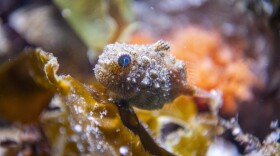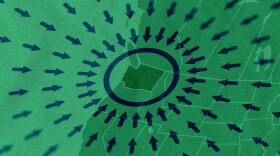In Northwest farm-country, tiny blueberry buds are already starting to plump up. But cold snaps could kill them. And that’s a bummer for your morning smoothie. Now, Northwest scientists are trying to help farmers by studying how low blueberries can go.
Heating a good-sized blueberry patch for 10 hours could cost around $3,000, which could be a big drag on profits. So when to flip the switch is key.
Washington State University scientist Gwen Hoheisel is freezing down hundreds of blueberry buds weekly. Cutting a bud open to show how many fruit-starts survived the cold test revealed little circles of dark green -- almost like half the size of a pinhead.
“When they’re dead [from cold], they are little pinheads of brown,” Hoheisel explained.
Hoheisel said 10 more years of data would make a useful real-time model for farmers.
The two biggest variables that affect how cold blueberry buds can go throughout the year are warmth and rainfall just days prior to a cold snap.
Copyright 2016 Northwest News Network








